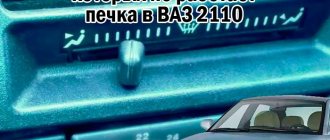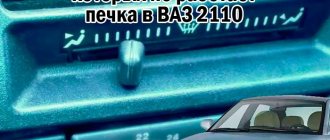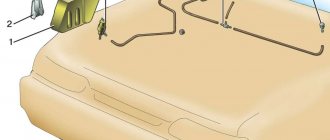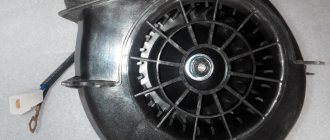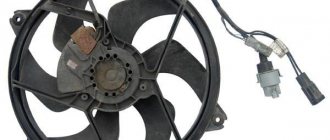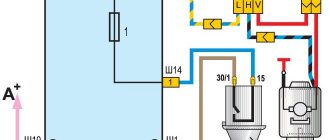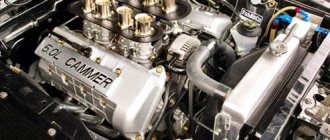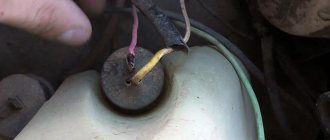The good performance of the VAZ 2114 engine is largely due to the good formation of the spark and fuel mixture. If one of these parameters is violated in a car, the engine may behave unpredictably.
Quite often, Samara 2 owners are faced with the problem of a stalling engine, and it occurs for many different reasons. This problem can really fray the nerves of those who are trying to solve this problem on their own.
In this article we will describe in detail how to independently diagnose the cause of engine tripping and failure of one or even two cylinders on a VAZ 2114.
Troit or not
How to understand that the engine in a VAZ 2114 is malfunctioning is quite simple, you just need to carefully listen to the operation of the internal combustion engine, and when driving, it is quite difficult not to notice that one of the cylinders is not working in the car.
Signs of a stalling engine:
- Loss of power;
- Vibrations;
- The engine shakes;
- Pops from the exhaust pipe;
If your car shows such signs of malfunction, most likely one or even two cylinders are not working.
How to find out which cylinder is not working
In order to find out exactly which of several cylinders is not working, you can use two methods: checking through an OBD scanner and the good old test by elimination. Let's consider both options in more detail.
Scanner check
You need to purchase a special scanner ELM327, which connects to the OBD2 connector. Then the car diagnostic application is downloaded on the phone and paired with the scanner via Bluetooth.
The scanner reads errors from the electronic control unit through a connector and indicates a malfunction. Thus, it is possible to determine which cylinder has failed.
Checking by elimination
This check involves listening to the sound of the engine. If the car is shaking, then you need to open the hood, remember the sound of the internal combustion engine and, one by one, using pliers with insulated handles, remove the caps of the high-voltage wires from the spark plugs.
When the cap is removed from the working cylinder, the sound of the internal combustion engine will change and the engine speed will drop. This is a sign of normal operation of the cylinder, but if the sound of the engine does not change when the cap is removed, this means that this particular cylinder is not working.
Reasons why the engine starts to stall
Engine trouble occurs for several reasons. When a cylinder fails in an internal combustion engine, it greatly affects its operation and it is simply impossible not to notice this.
List of reasons why the internal combustion engine fails:
- Wear of high-voltage wires;
- Failure of spark plugs;
- The ignition module is faulty;
- Clogged fuel injectors;
- Valve burnout;
- CPG wear;
- Failure or incorrect operation of the DPKV;
- ECU failure;
As you can see, there are quite a few reasons for the appearance of this malfunction on the VAZ 2114, and in order to understand which of them is the source of the breakdown on your car, you need to check all points and exclude some points in order to come to one conclusion.
Safety precautions when disconnecting wires
Don't forget about safety precautions. After all, these are high-voltage wires, and not small 12-volt “laces”. First of all, you need to place a dielectric under your feet, that is, a material that does not conduct electric current through itself. This can be a rubber mat or a wooden board. Also follow the technology for disconnecting wires. Remember that you need to hold your fingers not on the cap, but on the wire itself. And, of course, it is not recommended to lean against the body with your free bare hand at this time. Remember that if you do not follow these rules, you risk receiving a high voltage electric shock.
Why does the VAZ 2114 cylinder not work?
In order to make sure exactly why the cylinder failed, it is necessary to check all the elements that could cause the cylinder to fail.
Always start with the spark plugs
Checking the spark plugs
Checking the performance of the spark plug must be done on a special stand or by unscrewing the spark plug and putting it on its cap and placing it on the valve cover. Then ask someone you know or passerby to turn the starter. A spark should appear on the spark plug periodically. If it is missing, then the reason is in the candle.
It is better to check the spark plug on a cylinder that was initially in working condition.
Checking wires
High-voltage wires are made of special material with high insulation resistance to ensure reliable transmission of high voltage to the spark plug.
It is necessary to inspect the wires for breaks or damage to the insulation. The wire cap must be securely fixed to the spark plug and press the contact tightly against it.
If the wires have a characteristic worn appearance, they must be replaced.
Ignition module
The ignition module on the VAZ 2114 has two coils inside, each of which regulates the voltage supply to two cylinders. For example, the first coil is responsible for the operation of 1-4 cylinders, and the second is responsible for the operation of 2-3 cylinders.
From this we can conclude that if two cylinders, namely 1-4 or 2-3, do not work at once, then most likely there is a breakdown in the ignition module.
You can accurately verify this by removing this part from another car and installing it on a faulty car for testing.
Clogged fuel injectors
The injectors spray fuel into the combustion chamber. The VAZ 2114 has one injector for each cylinder. If one of the injectors becomes clogged, then the operation of this cylinder becomes impossible due to the lack of fuel mixture in it.
Checking the injectors can be done by measuring the fuel pressure and opening one of the injectors. The best way is to remove the fuel rail and wash the injectors.
Valves problem
Burnout of valves significantly affects the operation of the entire internal combustion engine. It occurs due to incorrect valve adjustment, namely when the valve is pressed and constantly open.
Also, if the valves are not adjusted correctly, engine tripping may occur.
You can check this by measuring the compression. To do this, instead of a spark plug, we screw in a compression gauge (a device for measuring compression in the engine) and the starter turns several revolutions. If there is no compression or it is much lower, then most likely the valve in the internal combustion engine is burnt out or incorrectly adjusted, or the CPG is worn out. To prevent wear on the CPG, it is necessary to drop some engine oil into the engine and measure again. Engine oil helps increase compression when the piston and rings wear. If there is no compression upon repeated measurement, then there is a problem with the valve.
DPKV failure
The sensor that takes readings from the rotation of the crankshaft is called DPKV. It determines the position of the piston in the engine and sends signals to the ECU. The sensor is directly involved in spark formation. If it fails, there will be no spark on all four cylinders and the engine will not be able to start.
Breakdown in the ECU
The control unit contains an electrical board with a large number of radio elements. Each element is responsible for a specific sensor. Special keys are responsible for the operation of the ignition module, which quite often fail, which makes it impossible to supply a spark to a certain cylinder.
If the engine in your car is not working, and you have tried all the methods, then it is best to contact an experienced electrician who can diagnose a breakdown in the engine control unit.
Symptoms of a problem
If you know about the main signs and symptoms of a motor malfunction leading to tripling, it will be much easier for you to solve the problems that arise.
There are several signs in total.
- The engine runs rough at idle, shaking and vibrations occur, which are clearly felt inside the cabin. This phenomenon cannot be confused with anything and the verdict is clear - one of the cylinders has failed. This symptom appears even when the unit is broken.
- Blackening of the electrode for spark plugs, presence of soot and soot. It is not enough to simply replace the spark plugs with new ones, since this does not eliminate the cause of soot formation.
- The exhaust changes its sounds. When tripping, the exhaust sound literally shakes the car. Experienced drivers notice this quickly and easily.
- The appetite of the power unit is noticeably growing. There can be many reasons for increased consumption, so a full diagnosis will be required.
- Dynamic performance decreases, speed and power drop. At low speeds it is not difficult to notice when picking up speed. But this can be caused by cylinder failure, that is, tripping, or other reasons.
- The revolutions are floating. This is easy to notice by looking at the tachometer needle. Changes, that is, fluctuations, can be serious or minor, in the range of 100 revolutions.
- When accelerating, you can feel the engine jerking in any gear.
To understand why the engine stalls at idle or in gear, you need to understand the possible reasons for this phenomenon.
Causes
The reasons for engine tripping are different. But they are most often caused due to the failure of one of the following units:
- Ignition system;
- Candles;
- High voltage wires;
- Vacuum booster;
- Air filter;
- Distributor;
- Incorrect adjustment or burnout of valves;
- Piston rings.
We recommend: VAZ 2115 won’t start - what to do
Now let’s take a closer look at the reasons and actions you can take in a given situation.
The revolutions are floating
| Cause | Your actions |
| The ignition was set incorrectly | It’s not uncommon for an engine to misfire because the ignition was set incorrectly. The problem is determined by skipping a beat, the appearance of popping noises, and bouncing of the engine. Listen to how the motor works. If the tripping occurs at idle, but when you start driving and increase the speed, the problem goes away, then the ignition is too early. It needs to be adjusted. |
| Vacuum booster problem | It may be damaged, the tightness of the diaphragm or valve may be compromised. This leads to the appearance of air inside the system, the mixture becomes “leaner” and does not ignite properly. As soon as there are literally 2 omissions, the candle will get wet and will not be able to work. If there are problems with the amplifier, the engine will fluctuate at idle, when the engine is hot and cold |
| Spark plug | Another common problem is engine tripping, accounting for about 50 percent of all cases. To solve the problem, periodically inspect the spark plugs, clean them and change them. Moreover, it is recommended to perform the replacement as a complete set, and not just each candle individually |
| High voltage wires | If breakdowns occur in one of the high-voltage circuits, the spark will not be able to reach its spark plug. As a result, the motor stalls and does not work properly. To check, turn off the lights, start the engine and watch the area from the distribution coil to the spark plugs. If a spark appears in the gap, this indicates the presence of a hole in the capacitor or wire insulation. A temporary solution is electrical tape, but then the wire must be replaced |
| Air filter | If the air filter becomes clogged and dirty, the engine will simply suffocate due to lack of oxygen. This situation is relevant for those who, when changing the oil, ignore the recommendation about the need to simultaneously replace the air filter. As a result, the spark plugs are flooded, the mixture becomes lean, and the engine suffers. Just change the filter and the problem will go away |
| Piston rings | Piston rings rarely become deformed, but this situation cannot be ruled out. To make sure everything is fine with this unit, perform a compression test. If the compression level in one of the cylinders is too low, try adding a little oil to it. If the problem goes away, then the reason is definitely in the rings. They need to be replaced |
| Valves | If valve clearances are violated, the entire system suffers. Because of this, periodically one of the cylinders cannot receive the required amount of air-fuel mixture. With such a malfunction, the engine will misfire at idle, when the engine is hot, when the engine is cold, and when driving. To fix the problem, you need to remove the cylinder head and adjust the valves in accordance with the instruction manual for your VAZ 2110 with the engine installed on the car. Different engines have their own nuances |
| Distributor | Not very often, but the distributor also sometimes causes the engine to trip. This assembly has three weak points - the turntable bearings, shafts and bushings. Over time and as the vehicle is used, they wear out. Therefore, if the culprit is the distributor, try replacing it completely or carry out partial repairs with a repair kit, replacing worn elements |
| Burnt out pistons or valves | A problem we don't want anyone to face. This is a serious engine failure that will require a complete repair of the power unit. The main difficulty is the need to disassemble the engine and visually inspect the pistons and valves. Carry out such a check only if all previous measures did not produce results and did not allow you to identify the culprit |
Checking pistons and valves for burnout can only be carried out by a specialist with sufficient experience. It is not recommended for beginners to carry out such activities on their own.
We recommend: Cooling fan does not turn on on Priora
Engine trouble is a simple symptom that can appear as a result of all sorts of breakdowns and defects in your engine. Therefore, your task is to find the cause of the tripping and promptly eliminate it. If you delay repairs, the consequences can be catastrophic for your car and budget.
Other engine triple options
There are several other options when the engine troits, for example, when the internal combustion engine is cold it works fine, but as soon as it warms up one of the cylinders begins to fail, or vice versa, when it is cold it troits, but as soon as it warms up the engine starts to work normally.
Let's consider each of the options.
VAZ 2114 engine troits when cold
This problem occurs in such cases when:
- Problems with the fuel mixture;
- Bad spark plug;
- Condensation has accumulated on the spark plug or ignition module;
- Large gap between the valve and the camshaft cam;
- Compression rings and piston are worn;
The VAZ 2114 engine troits when hot
This problem is more pronounced when there is electrical damage to the elements.
- ECU malfunction;
- Breakdown of the MZ coil;
- The cylinder head gasket is broken;
Foreign air is “sucked” into the carburetor, making the fuel mixture too lean
The culprits may be - a hose from the vacuum brake booster to the intake manifold (1), rubber sealing rings on the “quality” screw (8) and the solenoid valve (4), a slipped or burst tube to the housing of the vacuum ignition timing regulator on the distributor (2), leaky housing or damaged diaphragm of the vacuum regulator housing (6), deformation of the carburetor seating surface (5), or wear of its gaskets, crankcase ventilation tube (3), gasket under the intake manifold (7).

